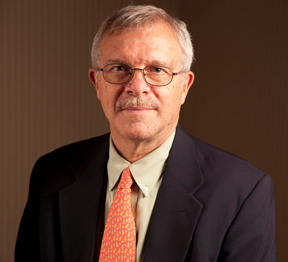
Backyard chemists are constantly looking for new and creative substances that are still legal, stimulating and provide hefty profits. One of the latest was 3,4-Methylenedioxypyrovalerone (MDPV) and a series of closely related chemical substances. MDPV has an amphetamine-like effect, which lasts several hours, followed by prolonged after-effects lasting several hours or days, and sometimes associated with suicidal ideation.
This substance is most often sold as so-called “bath salts” under the brand names of Ivory Wave, Ocean, Charge +, White Lightening, Scarface, Hurricane Charlie, Red Dove, Cloud 9, White Dove and many others. The brightly colored packages contain less than a gram of product and are clearly marked “Not for Human Consumption,” an obvious example of false and deceptive advertising. The locations of sales (tobacco shops and convenience stores) are not the usual venues for traditional “bath salts,” especially in quantities totally inadequate for a normal bath. It is also sold on-line as “M.D.P.V. Garden Insect Deterrent,” “pH Optimizer” or even “Plant Food.” Prices range from $30 a gram to as much as $170 a gram, with individual doses ranging from 200 to 500 mg/package. In contrast, true “bath salts” (used in bath water) cost a few pennies a gram and are sold in much larger quantities.
These products are being snorted or swallowed. They can also be sprayed on dried plants of various sorts and smoked as “synthetic marijuana,” often sold as “Spice.” Regardless of the route of ingestions, the effects include a mild sense of euphoria and stimulation, accompanied by insomnia, anxiety, depression, hyperactivity, hallucinations and an increased heart rate. Although the initial effects wear off in a couple of hours, the user may have longer lasting feelings of depression, anxiety, sleep disturbance and paranoia. Some users end up in the emergency room and those cases are subsequently reported to the Louisiana Poison Center. Of the 253 cases reported to ERs nationwide (as of January 2, 2011), 158 cases (or 62%) came from Louisiana. For some reason, Louisiana became a national testing site for such products before their subsequent widespread distribution around the United States.
Although mortality and true addiction appear limited, the potential for serious medical consequences exists. Some states, including Louisiana, began outlawing MDPV early in 2011, and the federal government subsequently took action on September 7, 2011. The DEA designated MDPV and its derivatives as Class 1 controlled substances, making them illegal to possess, a temporary solution that will last at least a year. But creative and unscrupulous chemists seem to be working faster than legislators, and various other dangerous substances proliferate as soon as one has been identified and outlawed.
The latest kid on the block appears to be phenazepam, a depressant sold as an “air freshener” and apparently manufactured in Russia. Although it can be added to the list of Schedule 1 drugs, making it susceptible to seizure, it still takes time to get such proposals through the legislative process. An alternative is to have the Secretary of the Louisiana Department of Health and Hospitals declare it (or other designer drugs) as hazardous. As such, it can be pulled off the shelves and held as contraband until it can be legitimately added to definitive legislation. Such an expedited declaration allows removal of dangerous substances quickly pending other more time consuming official procedures. If a substance proves to be truly innocuous, it can always be returned to the supplier.
Although it may be impossible to remove all substances susceptible to abuse from those determined to use them, obvious examples of documented dangerous substances should be removed from legal sale as was done with MDPV. The prompt actions taken against “Bath Salts” and “Synthetic Marijuana” demonstrated that local health officials and state and federal government agencies can work together quickly and efficiently to remove at least one set of dangerous substances from the hands of consumers. Addition of further legal tools will help us remain one step ahead of the backyard chemists both here and abroad. We may not be able to save all people from their self-destructive tendencies, but we can make it harder for them to indulge.









